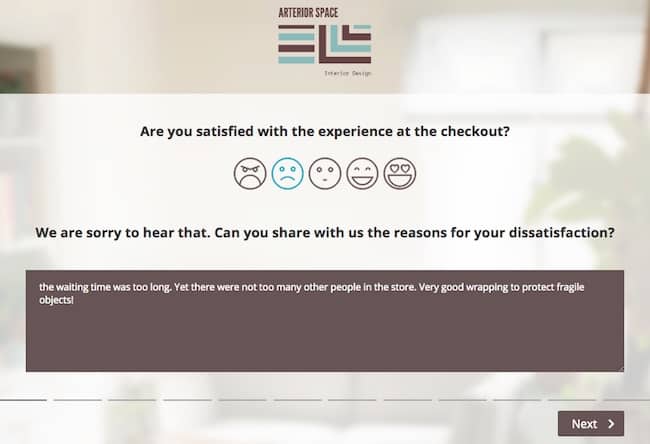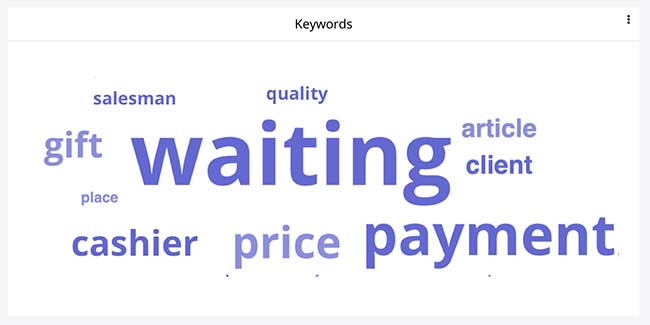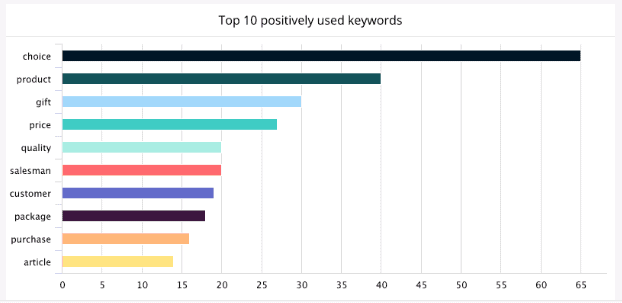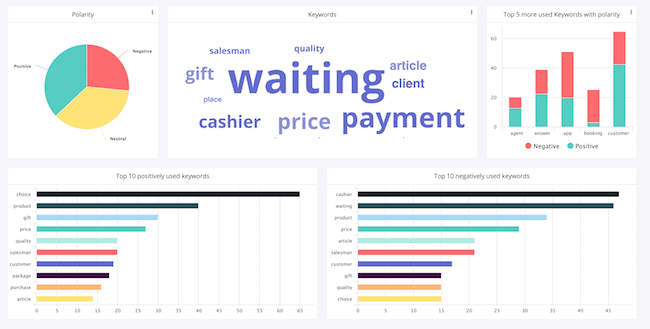We are pleased to announce that Skeepers CX has added a new feature to its platform: a tool to analyze comments and suggestions collected via survey text fields. Verbatim analysis can help you better understand your customers’ comments, while offering a new perspective on feedback provided via open questions in your surveys.
In this article, we’ll be discussing semantic analysis, and how this approach can enable you to transform your clients’ comments into operational and strategic tools.
What is semantic analysis?
Semantic analysis, an approach rooted in linguistics
Semantic analysis is an important component of linguistics. In contrast to lexical analysis, which focuses on the words used in a text, semantic analysis takes a more global approach to a text and its meaning. It includes the analysis of expressions that are used, and determines the meaning of the sentiment being expressed in these.
This approach is now used beyond the field of linguistics, as the marketing world has quickly understood what semantic analysis can offer.
The use of semantic analysis in marketing
The importance of customer knowledge in marketing can never be stressed enough. Customer knowledge has long been divided into two approaches: quantitative and qualitative. In this second strategy, semantic analysis provides a truly systemic approach, with considerable benefits:
- Semantic analysis saves you a great deal of time. It’s no longer necessary to analyze the exact contents of each participant’s comments to understand their meaning.
- Semantic analysis is more objective. Its method is based on facts, such as the occurrence of expressions or the polarity of content in verbatim feedback. This means that the results are not subject to the bias that inevitably comes along with human interpretation.
- Semantic analysis synthesizes all client feedback. Instead of analyzing each customer’s comments individually, everything that was said or written can be analyzed at once. This synthesis also reinforces the objective nature of this method.
These days, qualitative approaches to obtaining customer knowledge are no longer limited to classic types such as focus groups and individual interviews, which can sometimes prove outdated. Intelligent customer surveys are becoming increasingly popular, whether to continuously measure the customer experience or collect qualified customer data in an omnichannel scope.
Let’s take a closer look at how semantic analysis can bring a great deal of added value to the interpretation of your intelligent surveys.
Using semantic analysis for customer surveys
An important note before we begin: whether your survey is focused on customer satisfaction or customer knowledge, it should not be entirely made up of open questions requiring verbatim analysis. In general, we recommend that around 1/3 of your survey should consist of open questions.

If you do not have access to a semantic analysis solution, only 1 in 5 questions in your survey should be open questions. Otherwise, analysing your survey results will take a great deal of time, with potentially disappointing results.
Why use verbatim analysis on customer satisfaction survey results?
Evaluating customer satisfaction is essential in order to detect any snags in your customer journey.
By using quantitative indicators such as the NPS or the CSAT, you will be able to detect any recurring instances of customer dissatisfaction at any stage of the customer journey. For example, if you see lower scores for the question “Are you satisfied with the checkout process?”, you’ll be able to identify your friction points.
However, this doesn’t tell you the reason for this issue. Is it the wait time? The quality of service provided by the cashier? Limited payment methods? It’s difficult to make an exhaustive list, as there are various different possible reasons. With intelligent survey software, you can include a sub-question that asks your clients the reason for their dissatisfaction. This can be done in two different ways:
- Via a multiple choice question that lists the most common possible reasons. You can then use “other” as the last option, with a text field appearing if the participant selects this option, asking them to provide further details.
- You can also simply skip the multiple choice step and ask an open question.

In both cases, verbatim analysis is extremely useful in determining which areas for improvement to prioritize in the checkout process!
1) Use an intelligent solution to interpret verbatim feedback
As we have already seen, reading all verbatim feedback is time-consuming and counterproductive. Nevertheless, reading through one or several respondents’ verbatim feedback is not essential, but can offer you a better understanding of your customers. Verbatim analysis allows for an intelligent interpretation of this feedback: in addition to highlighting the polarities that are present in this feedback (we’ll talk more about this process a little later in this article), key terms are identified and shown in bold.
These tools will enable you to instantly and effortlessly understand the content of each comment.
2) Identify the terms most frequently used by your respondents
By analyzing the occurrence of specific words in your customers’ comments, you’ll be able to identify key subjects that require your attention.
To do this, a new type of graphic has been added to those already available on the MyFeelBack platform: the word cloud. In a word cloud, the size of a word is proportional to its rate of occurrence, allowing you to instantly see the most important subjects and the most frequently used terms. This is a valuable tool that enables you to focus on the essential!

Word cloud related to customer satisfaction following a purchase. The words “wait” and “payment” are the most frequently used.
To make the graphic easier to interpret, “stop words” (pronouns, articles, etc.) are removed from the analysis. In addition, plurals and verb conjugations are also normalized.
There are also ways to go even further in interpreting verbatim feedback, such as through semantic mapping. This approach consists of categorizing verbatim feedback and organizing it by topic.
For this type of analysis, we recommend getting in touch with one of our partners, who are experts in semantic analysis, such as Erdil, Proxem or Viavoo.
3) Determine the polarity (positive or negative) of each sentence to determine each term’s context
Semantic analysis in Skeepers consists of much more than counting the occurrence of terms. To get the most out of verbatim feedback, it is important to determine the positive, neutral or negative polarity of the comment as a whole. Elements with a negative tone will appear in red, those with a neutral tone in grey, and those with a positive tone in green.

Example of an analysis of a customer comment’s polarity
By putting highlighted terms into perspective by determining the polarity of the sentences in which they are used, you’ll be able to see which areas have generated the most satisfaction or dissatisfaction and identify areas to focus on first!
This analysis is essential to understanding your strengths and weaknesses, and will help you prioritize areas of improvement and enhance your strong points.
4) Create new indicators to help you manage the customer experience
Surveys enable you to identify any difficulties that your customers are encountering, and verbatim analysis completes this assessment by showing why your customers encountered these issues, or what led to their dissatisfaction. These two processes are complementary.
Comparing data from your verbatim analysis with other data collected via your surveys will help you understand your customers even better.
Let’s go back to our first example, with the question “Were you satisfied with the checkout process?” Filter the feedback to show customer answers that express dissatisfaction, and analyze the comments in the open question. This new indicator will allow you to better understand what caused this dissatisfaction. If you see words such as “wait”, “cheques”, or “friendliness”, it’s easy to guess which areas of improvement to focus on next in order to enhance the customer experience!
The verbatim analysis tool on Skeepers enables you to automatically, effectively and quickly analyze customer comments and transform these into tools for operational and strategic improvement.

One way of displaying information in a Skeepers CX report: the top 10 words present in comments with a positive tone

A Skeepers statistical report focused on verbatim analysis
Your verbatim feedback holds a great deal of valuable information that you can use to improve your customer journey. Feel free to contact us to find out more about all of the different verbatim analysis possibilities on the Skeepers platform!



















